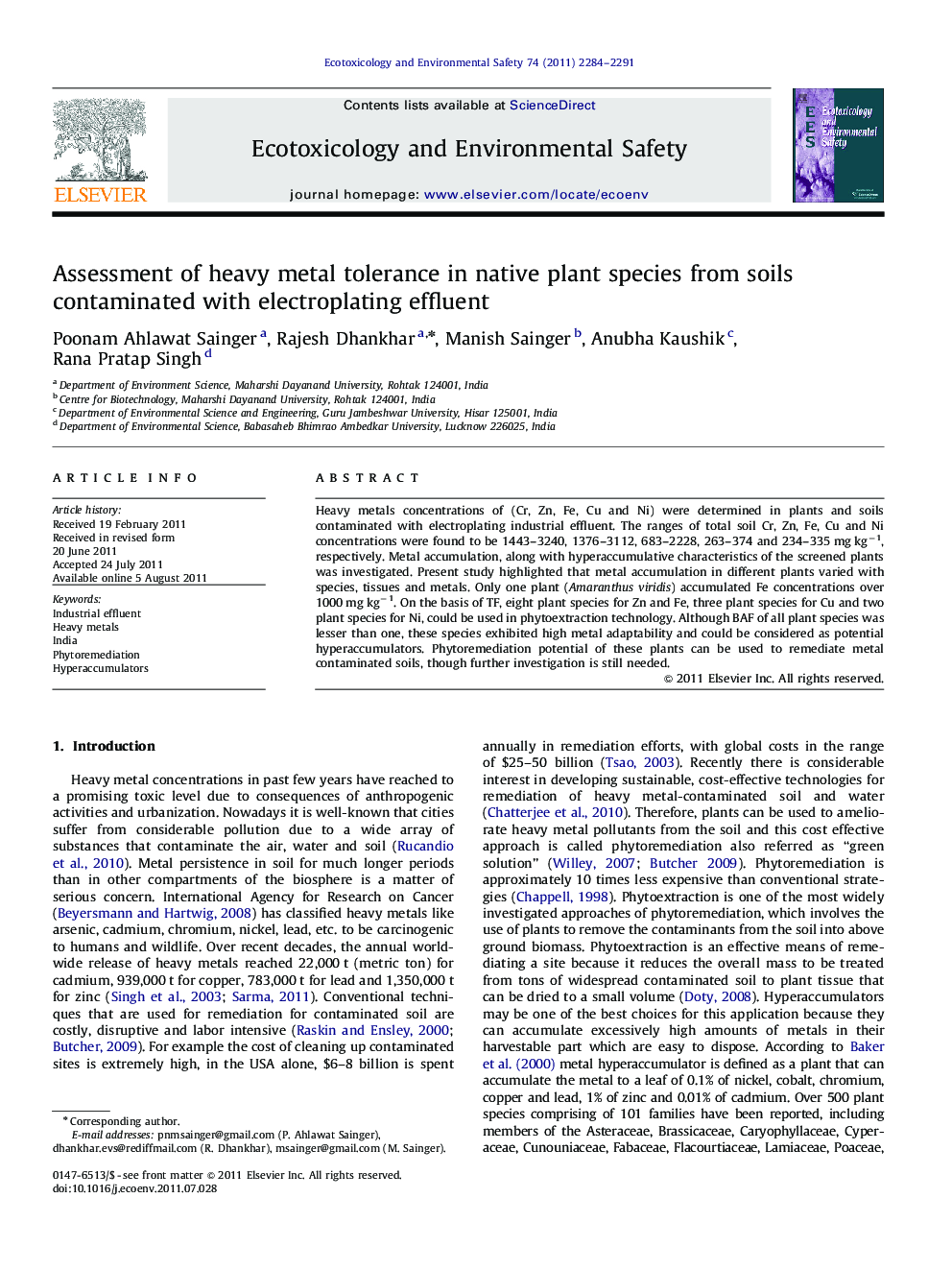| Article ID | Journal | Published Year | Pages | File Type |
|---|---|---|---|---|
| 4421028 | Ecotoxicology and Environmental Safety | 2011 | 8 Pages |
Heavy metals concentrations of (Cr, Zn, Fe, Cu and Ni) were determined in plants and soils contaminated with electroplating industrial effluent. The ranges of total soil Cr, Zn, Fe, Cu and Ni concentrations were found to be 1443–3240, 1376–3112, 683–2228, 263–374 and 234–335 mg kg−1, respectively. Metal accumulation, along with hyperaccumulative characteristics of the screened plants was investigated. Present study highlighted that metal accumulation in different plants varied with species, tissues and metals. Only one plant (Amaranthus viridis) accumulated Fe concentrations over 1000 mg kg−1. On the basis of TF, eight plant species for Zn and Fe, three plant species for Cu and two plant species for Ni, could be used in phytoextraction technology. Although BAF of all plant species was lesser than one, these species exhibited high metal adaptability and could be considered as potential hyperaccumulators. Phytoremediation potential of these plants can be used to remediate metal contaminated soils, though further investigation is still needed.
► We investigated that soils of the four studied sites were contaminated with heavy metals. ► Plants accumulated high concentrations of metals. ► Higher Cr concentrations are accumulated in roots and Zn, Fe, Cu, Ni are more accumulated in shoots. ► According to translocation factor, some species could be used as potential hyperaccumulators. ► All plants are metal tolerant and can be used for remediation of contaminated lands.
